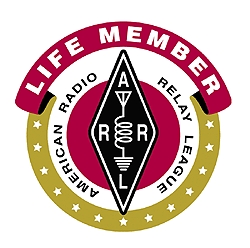So after a week of experience with WSJT-X and in the interest of full disclosure, I am clearly no expert. But here are a few gems that I’ve found by reading through the manual a few times:
- Set the incoming level to about 30 on the scale. Best results are when the slider to the right is about mid-scale, so use your sound card controls to position it to 30.
- The decode rate is critical. I was pretty sure mine was set at the recommended 48000 samples per second. I had noticed several strong carriers that were appearing on the waterfall display that did not correspond to signals shown in the P3 pass-band. These signals ranged from 5-30 dB over the noise floor. I suspected my sound interface, but Spectrum Lab showed it to be clean. I double checked the recording device/properties/advanced and found it was set to “CD Quality, 16-bit, 44100 Hz”. I changed it to “DVD Quality, 16-bit, 48000 Hz” and everything was just fine with the waterfall.
- The software does support bidirectional rig control. You will notice a small box, about the size of a check box, slightly to the left and down from the ORG window. This is colored orange when rig control is unidirectional. If you adjust the Setup/Configuration screen “Polling rate” to 1 or 2 seconds, then that box will be colored green. Now any VFO change will show up on the ORG display (in theory). For the most part it works fine with my K3, but it does seem to get upset when I change bands.
- You can use Split Tuning for optimal transmit tone generation. Since WSJT-X can sample up to 4 KHz of spectrum for JT65 and JT9 signals, it is possible to see and decode both areas at once (if you have a receive pass-band that can handle 4 KHz). However the audio pass-band on transmit may well block higher frequency tones. In my case, I could decode a signal at 3000 Hz with no problem, but there was zero output because 3000 Hz tones were out of my transmit pass-band. By enabling Split in the Setup/Configuration screen AND setting my K3 to Split, WSJT-X will shift the transmit VFO to keep the generated tones in a 1500-2000 Hz window. This works in both unidirectional and bidirectional Rig Control modes. By the way, when this feature is enabled, a “S” appears in the orange or green box near the ORG window.










Back in 2011 I begin to notice a weird signal about 14076 and my MixW couldn’t do anything with it.
I was having a contact with an op one day and was telling me about JT65.
I gave it a try and fell in love with it right away.
Then I was reading about JT9-1 and gave it a try. The only way I can explain it is WOW if you are a little patient.
I don’t have CAT control on my old Kenwood TS450Sat but was reading about the new split software for JT65 and JT9
I can put the rig on about 14077.4 and work the bottom part of JT9 and upper part of JT65.
The software is WSJT-X v1.2 r 3563.
Great going guys
KO4PU
When I get on WSJT-X to jt65 the box well Saying Error writing WAV file
The system cannot find the
the path specified.
Hi Jeffrey,
I would suggest you join the WSJTGROUP in Yahoo Groups and ask your question there. The authors of the program are great about responding.
Good luck & 73, Bob, WB4SON
Hello, I’m new to WSJTX and very interested in understanding the technology and it’s functions the problem I am having is once installed the software will not recognize my sound cards even the built-in realtek card built into my Asrock mother board running windows 7 Ultimate 64bit in the sound card drop down list here is no listing.Any and all help would be greatly appreciated.
Hi Jay,
Iv’e read some comments about a security update that Windows made that causes the sound cards to become “private” so that they don’t show up in WSJT. The solution I’ve seen is to uninstall the WSJT-X product, make sure your Windows updates are current (Win 7 is pretty out of date and may not have future updates), the reinstall the WSJT-X update. Some googling might help as joining the WSJT-X user group. Group name is wsjtgroup and that is a yahoogroups.com group.
Good luck, 73, Bob, WB4SON